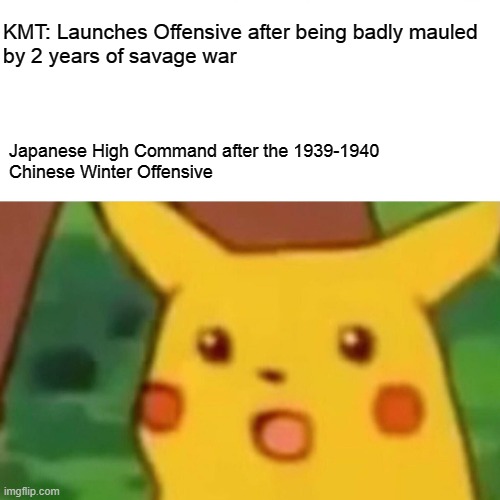The question of oil supplies long term is a rather different subject from the question of the quality and size of the relevant forces. Specifically on that question, however, the Japanese will be better off than OTL or the same at absolute worst both because of their ample storage but also because of production in the Soviet Far East.
Contrary to popular belief production in the region in 1940 amounted to 588,000 tons and grew to 1,200,000 tons in 1945, which converted to barrels is 10,140,000. To put that into context,
total Japanese consumption in 1941 was thus:
Japan entered the Second World War in large part due to its need for oil. The Empire actually used relatively little oil – about 32 million barrels in 1941 (for the whole year, and a good part of that went into Japan’s strategic reserve) compared to 4.8 million barrels per day in 2012, down from Japan’s peak of 5.71 million barrels a day in 1997. The Empire produced almost none of this, relying on imports, chiefly from the United States.
Is it enough to make Japan self sufficient? No, but it is certainly better than OTL-assuming the U.S. still places sanctions on the Japanese too-and ensures military operations can continue apace uninterrupted. As for everything else, the Soviets have nothing with which to counter-attack the Japanese with that does not come at the expense of missing out on it in Europe,
nor are they growing more powerful equipment wise either; far from it in fact:
In addition, because of the number of formations being created to replace or reinforce those being shredded at the front individual Soviet rifle divisions consistently went into battle with substantial shortfalls in equipment and manpower. Early in 1942 Soviet rifle divsions weren't just running as much as 30% smaller in terms of manpower compared to their pre-war versions, but also were substantially less mobile and missing much of their pre-war punch. The main source of anti-tank capability late in 1941 had become the PTRD anti-tank rifle. Obviously, an anti-tank rifle was hardly as effective as an anti-tank gun. Nevertheless, the problem the Red Army faced late in 1941 was that divisional anti-tank gun complements in its rifle divisions had falled from 54 to only 18 such weapons. In terms of mobility things were even worse. The December 1941 rifle division was only assigned 248 motor vehicles and 2,410 horses versus pre-war totals of 558 and 3,039 respectively. All of this contributed to the problems Soviet rifle divisions would have in terms of effectively challenging German forces in 1941-1942.
The Red Army is often portrayed as overwhelmingly powerful in 1942; for quantitative reasons as much as anything else. In reality it was numerically far weaker than it had been in June of 1941. For instance, in spite of concentrating production on key weapons systems like tanks, aircraft and artillery and mortars the Red Army's stocks hadn't come anywhere close to pre-war levels. In June of 1941 the Red Army had 22,600 tanks on its books. In May of 1942 this total had fallen to 9,325 such machines. Aircraft had dropped from 20,000 to 14,967. Artillery and mortar stocks were down from 112,800 to 107,795 on the eve of the 1942 German summer campaign. Moreover, the increased focus on tank, artillery, and aircraft production that had even enabled the Red Army to maintain such those numbers came at the expense of other very important items - not least of which being truck production.
In 1941 the Soviet economy produced 118,704 trucks; a number that hadn't come close to meeting the Red Army's needs. Then truck output collapsed in 1942, with only 32,409 such vehicles manufactured in the entire year. This meant the Red Army's long-standing problems in coordinating the disparate combat arms only worsened as the increased flow of tanks was not matched by motorized infantry and artillery. This lack of trucks thus greatly hindered the Red Army's ability to go on the offensive. Not only couldn't the prime mover starved artillery keep up with Soviet armor once the battlefield became mobile (at least the infantry could ride on tanks - though at dreadful cost as they entered the battlefield), but each mile removed from railheads meant needed fuel, munitions, and other such critical supplies failed to reach the front. Though the 1942 era Red Army would launch aggressive offensives and counteroffensives at a dizzying pace; few of them had the logistical legs to truly threaten to take away the German hold on the initiative.
As it were, even if we ignore all of this, the Soviets cannot suddenly grow a navy or air power in the Far East, which means the IJN still has shut down the Pacific Lend Lease route. As for the Chinese,
it's important to remember they did attempt a counter-attack in 1939-1940 and the end result was such a disaster that they did not attempt such again until 1945 as the IJA was in collapse everywhere. The Kwantung Army was a separate force than that of the China Expeditionary Force, which meant a Japanese attack on the Soviets would not divert forces from China.

